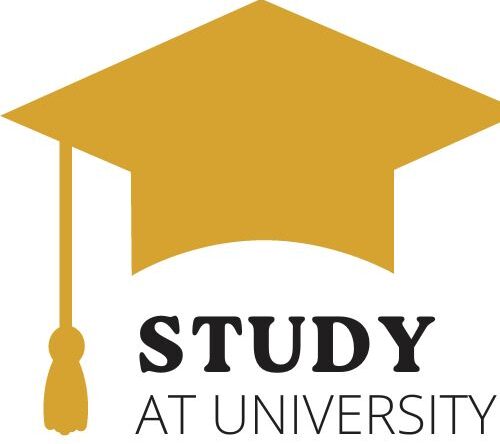Welcome to an exploration of the prestigious Master of Arts in Art Sciences (MAAS) program. As an academic opportunity that blends rigorous scholarly research with an expansive understanding of art, the MAAS program is designed to deepen your knowledge of the theoretical, historical, and practical aspects of the art world. By enrolling in MAAS, you will embark on an intellectual journey that sharpens your analytical skills and fosters a sophisticated comprehension of various art forms. This program not only equips you with a solid foundation in art sciences but also prepares you to contribute meaningfully to the cultural sector, whether in academia, museums, or other professional settings. Have you ever contemplated pursuing a higher degree in the arts to deepen your knowledge and expertise? If so, the Master of Arts in Art Sciences (MAAS) could be the ideal next step for you. This advanced degree offers a broad and profound understanding of the arts, combining theory, practice, and research to cultivate well-rounded art scholars and professionals.
What is the Master Of Arts In Art Sciences (MAAS)?
A Master of Arts in Art Sciences (MAAS) is an advanced academic degree focusing on the interdisciplinary study of art. This program offers a deep dive into various facets of the art world, including art history, art criticism, aesthetics, and contemporary art practices. The MAAS is designed to enrich your knowledge, enhance your research capabilities, and prepare you for professional opportunities in academia, museums, galleries, and other cultural institutions.
Key Features of MAAS Programs
Understanding the core components of MAAS programs can help you determine whether this path aligns with your aspirations. Below is a concise table outlining the typical features of MAAS programs:
| Feature | Description |
|---|---|
| Duration | Usually 2 years (full-time) |
| Coursework | Combines theory, practice, and research |
| Credits Required | Approximately 30-36 credits |
| Areas of Study | Art history, theory, criticism, aesthetics, contemporary art |
| Capstone Requirement | Thesis or comprehensive project |
Why Pursue a MAAS?
Choosing to pursue a MAAS can be motivated by various factors. Whether you’re driven by a passion for art, a need for career advancement, or the desire to contribute to art scholarship, understanding the benefits of the MAAS program is crucial.
Expanding Your Knowledge Base
The MAAS program offers an extensive exploration of art sciences, helping you gain in-depth knowledge about various art forms, movements, and theoretical frameworks. This enriched understanding can make you a more proficient and insightful art professional.
Enhancing Research Skills
One of the significant components of the MAAS is the focus on research. You’ll engage in rigorous academic research, developing skills in critical analysis, scholarly writing, and methodological approaches that are essential for success in academia and beyond.
Career Advancement
Graduating with a MAAS can open doors to higher-level positions within the art world. Whether you aim for a curatorial role, an academic career, or a leadership position in cultural institutions, the MAAS equips you with the credentials and expertise necessary for advancement.

Curriculum Overview
The curriculum of a MAAS program is designed to provide a balanced mix of coursework, research opportunities, and practical experiences. Below, we delve into the main components of the curriculum to give you a thorough understanding of what to expect.
Core Courses
Core courses in a MAAS program typically cover essential topics that provide a solid foundation in art sciences. These may include:
Art History: An exploration of significant art movements, artists, and styles from different periods and regions.
Art Theory and Criticism: A critical examination of theoretical frameworks and methodologies used in the analysis and interpretation of art.
Research Methods in Art: Training in research techniques, scholarly writing, and critical analysis specific to the art sciences.
Elective Courses
Elective courses allow you to tailor your education to your interests and career goals. Options may include:
Contemporary Art Practices: Focus on current trends and movements in the art world, including digital art, installation art, and performance art.
Curatorial Studies: Examination of the principles and practices of curating exhibitions, including museum management and gallery operations.
Aesthetics: In-depth study of philosophical questions related to beauty, taste, and artistic value.
Capstone Requirements
The capstone experience in a MAAS program is essential to demonstrating your mastery of the subject matter. Options typically include:
Thesis: An extensive research project that contributes original knowledge to the field of art sciences.
Comprehensive Project: A practical project, such as curating an exhibition or developing a public art program, that showcases your skills and knowledge.
Admission Requirements
Preparing for admission to a MAAS program involves understanding the specific requirements and ensuring you meet them. Here’s a breakdown of typical admission criteria:
Academic Background
Most MAAS programs require a bachelor’s degree in art history, fine arts, or a related field. Strong academic performance, particularly in courses related to art, is essential.
Application Materials
The application process generally includes the submission of various materials, such as:
Transcripts: Official records of your undergraduate coursework and grades.
Letters of Recommendation: Typically, two to three letters from academic or professional references who can attest to your qualifications and potential.
Personal Statement: A reflective essay detailing your academic interests, career goals, and reasons for pursuing the MAAS.
Portfolio
Many programs require a portfolio showcasing your work, particularly if your background is in fine arts. This portfolio should highlight your skills, creativity, and understanding of art.
Entrance Exams and Interviews
Some programs may request standardized test scores (e.g., GRE) and conduct interviews to assess your suitability for the program.

Career Opportunities
A MAAS degree can lead to diverse career paths, each offering unique opportunities to apply your knowledge and skills in the art world.
Academic Careers
If you’re passionate about teaching and research, a career in academia may be ideal. With a MAAS, you can pursue positions such as:
University Professor: Teach courses in art history, theory, and criticism while conducting scholarly research.
| Academic Positions | Description |
|---|---|
| University Professor | Teach and conduct research in higher education institutions. |
| Research Scholar | Engage in specialized research projects and publish findings. |
Curatorial and Museum Careers
For those interested in working directly with artworks and exhibitions, curatorial and museum careers offer exciting possibilities:
Curator: Design and organize exhibitions, manage collections, and conduct research on artworks.
Museum Director: Oversee museum operations, including collections management, educational programs, and fundraising.
| Curatorial/Museum Positions | Description |
|---|---|
| Curator | Design and organize exhibitions, manage collections. |
| Museum Director | Oversee museum operations and programs. |
Other Professional Opportunities
The skills and knowledge gained from a MAAS degree can also be applied to various other professional roles:
Art Critic: Write reviews and critiques for publications, providing insightful commentary on contemporary art.
Art Educator: Teach art at the K-12 level or in community programs, fostering artistic skills and appreciation.
Gallery Manager: Run commercial art galleries, overseeing sales, marketing, and artist relations.
| Other Professional Paths | Description |
|---|---|
| Art Critic | Provide commentary and analysis on art for publications. |
| Art Educator | Teach art in schools or community settings. |
| Gallery Manager | Manage commercial art galleries, handling sales and marketing. |
Preparing for a MAAS Program
Successfully entering and excelling in a MAAS program requires thoughtful preparation. Here are some steps you can take to ensure you’re ready for this advanced academic journey.
Strengthening Your Academic Background
Building a strong academic foundation is crucial for admission to a MAAS program. Focus on excelling in your undergraduate courses, particularly those related to art history, theory, and criticism. Engaging in independent study projects or research can also enhance your preparation.
Gaining Relevant Experience
Practical experience in the art world can significantly enhance your application. Consider internships or volunteer opportunities at museums, galleries, or cultural institutions. This hands-on experience can provide valuable insights and help you build a network of professional contacts.
Developing Your Portfolio
If a portfolio is required, take the time to curate a selection of your best work. Ensure that your portfolio demonstrates your skills, creativity, and understanding of art. Seek feedback from mentors or peers and be prepared to revise your portfolio based on their suggestions.
Crafting a Compelling Personal Statement
Your personal statement is a critical component of your application. Use this essay to articulate your academic interests, career goals, and reasons for pursuing the MAAS. Be specific about how the program aligns with your aspirations and what you hope to achieve through your studies.
Selecting the Right MAAS Program
Choosing the right MAAS program is a crucial decision that can impact your academic and professional future. Here are some factors to consider when evaluating potential programs.
Program Reputation
Research the reputation of the programs you’re interested in. Look for programs with a strong track record of academic excellence, distinguished faculty, and successful alumni. Program rankings and reviews can provide valuable insights.
Faculty Expertise
The expertise and research interests of the faculty can significantly impact your educational experience. Look for programs where the faculty’s interests align with yours. Review faculty profiles, publications, and current research projects to assess their suitability as mentors.
Curriculum and Specializations
Review the curriculum and available specializations within each program. Ensure that the coursework and research opportunities align with your interests and career goals. Some programs may offer unique specializations or interdisciplinary options that appeal to you.
Location and Resources
Consider the location of the program and the resources available. Proximity to major art centers, museums, and cultural institutions can provide valuable opportunities for internships, collaborations, and research. Evaluate the program’s facilities, libraries, and access to art collections.
Financing Your MAAS Education
Funding a graduate education can be challenging, but various options are available to help you finance your MAAS degree.
Scholarships and Grants
Many institutions offer scholarships and grants based on academic merit, financial need, or specific criteria related to your field of study. Research available scholarships and apply early to maximize your chances of receiving funding.
| Funding Source | Description |
|---|---|
| Institutional Scholarships | Scholarships offered by the university based on merit or need. |
| External Scholarships | Awards from foundations, organizations, or government agencies. |
Assistantships
Graduate assistantships provide financial support in exchange for teaching, research, or administrative duties. These positions can offer valuable experience while covering tuition costs and providing a stipend.
Loans and Work-Study Programs
Federal and private loans are available to graduate students. Additionally, work-study programs may offer part-time employment opportunities on campus, allowing you to earn money while completing your degree.
Conclusion
Pursuing a Master of Arts in Art Sciences (MAAS) is a significant commitment that can profoundly impact your knowledge, skills, and career opportunities in the art world. This advanced degree offers a comprehensive education in art history, theory, and criticism, combined with valuable research and practical experiences. By carefully selecting the right program, preparing diligently, and exploring various funding options, you can embark on a rewarding academic journey that aligns with your passions and professional aspirations.
Engaging with a MAAS program not only enhances your expertise but also positions you to make meaningful contributions to the field of art sciences. Whether you aim to teach, curate, or otherwise influence the art world, the knowledge and skills gained through a MAAS program will be invaluable in achieving your goals.

